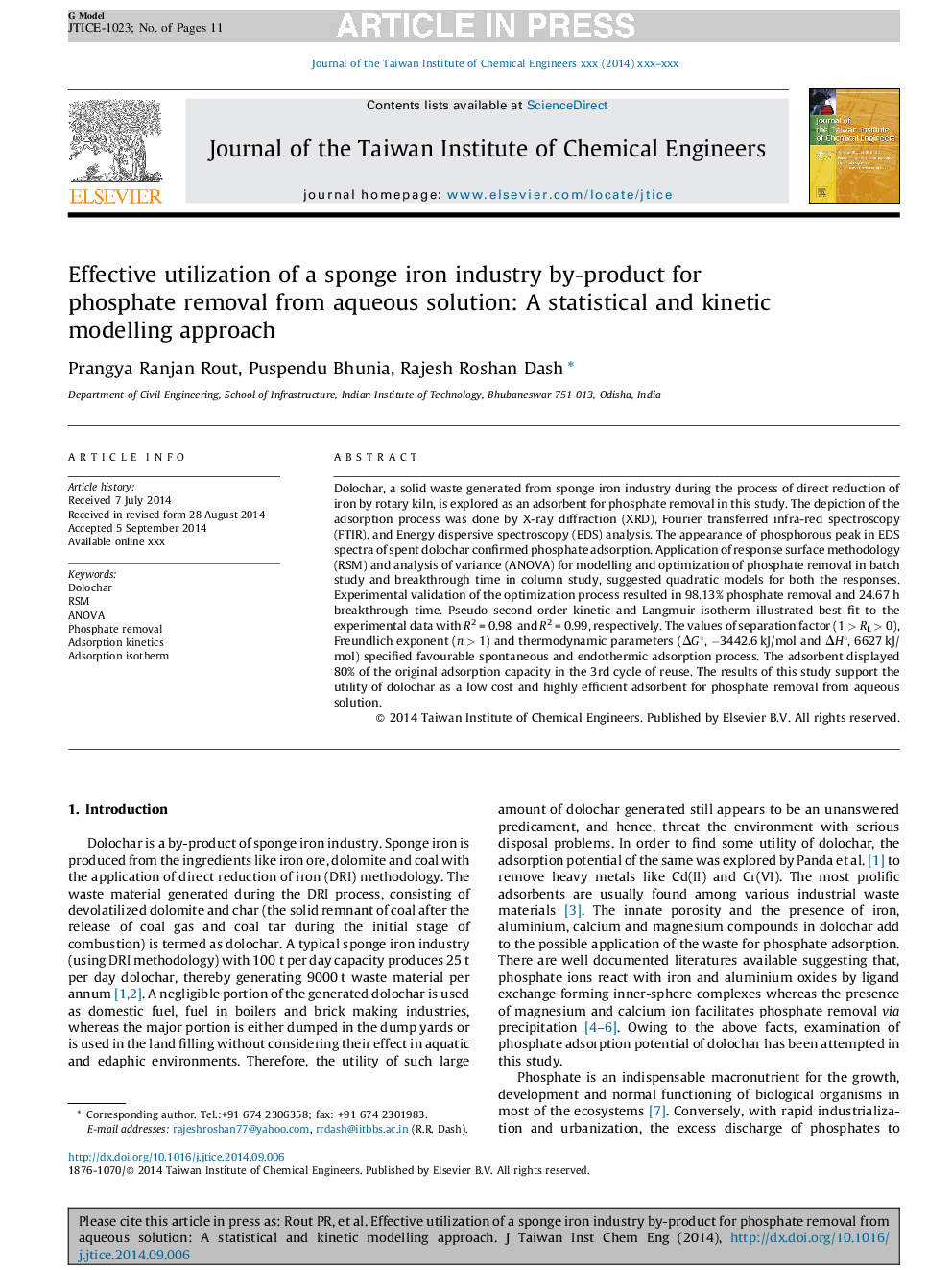| Article ID | Journal | Published Year | Pages | File Type |
|---|---|---|---|---|
| 690993 | Journal of the Taiwan Institute of Chemical Engineers | 2015 | 11 Pages |
Abstract
Dolochar, a solid waste generated from sponge iron industry during the process of direct reduction of iron by rotary kiln, is explored as an adsorbent for phosphate removal in this study. The depiction of the adsorption process was done by X-ray diffraction (XRD), Fourier transferred infra-red spectroscopy (FTIR), and Energy dispersive spectroscopy (EDS) analysis. The appearance of phosphorous peak in EDS spectra of spent dolochar confirmed phosphate adsorption. Application of response surface methodology (RSM) and analysis of variance (ANOVA) for modelling and optimization of phosphate removal in batch study and breakthrough time in column study, suggested quadratic models for both the responses. Experimental validation of the optimization process resulted in 98.13% phosphate removal and 24.67 h breakthrough time. Pseudo second order kinetic and Langmuir isotherm illustrated best fit to the experimental data with R2 = 0.98 and R2 = 0.99, respectively. The values of separation factor (1 > RL > 0), Freundlich exponent (n > 1) and thermodynamic parameters (ÎG°, â3442.6 kJ/mol and ÎH°, 6627 kJ/mol) specified favourable spontaneous and endothermic adsorption process. The adsorbent displayed 80% of the original adsorption capacity in the 3rd cycle of reuse. The results of this study support the utility of dolochar as a low cost and highly efficient adsorbent for phosphate removal from aqueous solution.
Related Topics
Physical Sciences and Engineering
Chemical Engineering
Process Chemistry and Technology
Authors
Prangya Ranjan Rout, Puspendu Bhunia, Rajesh Roshan Dash,
